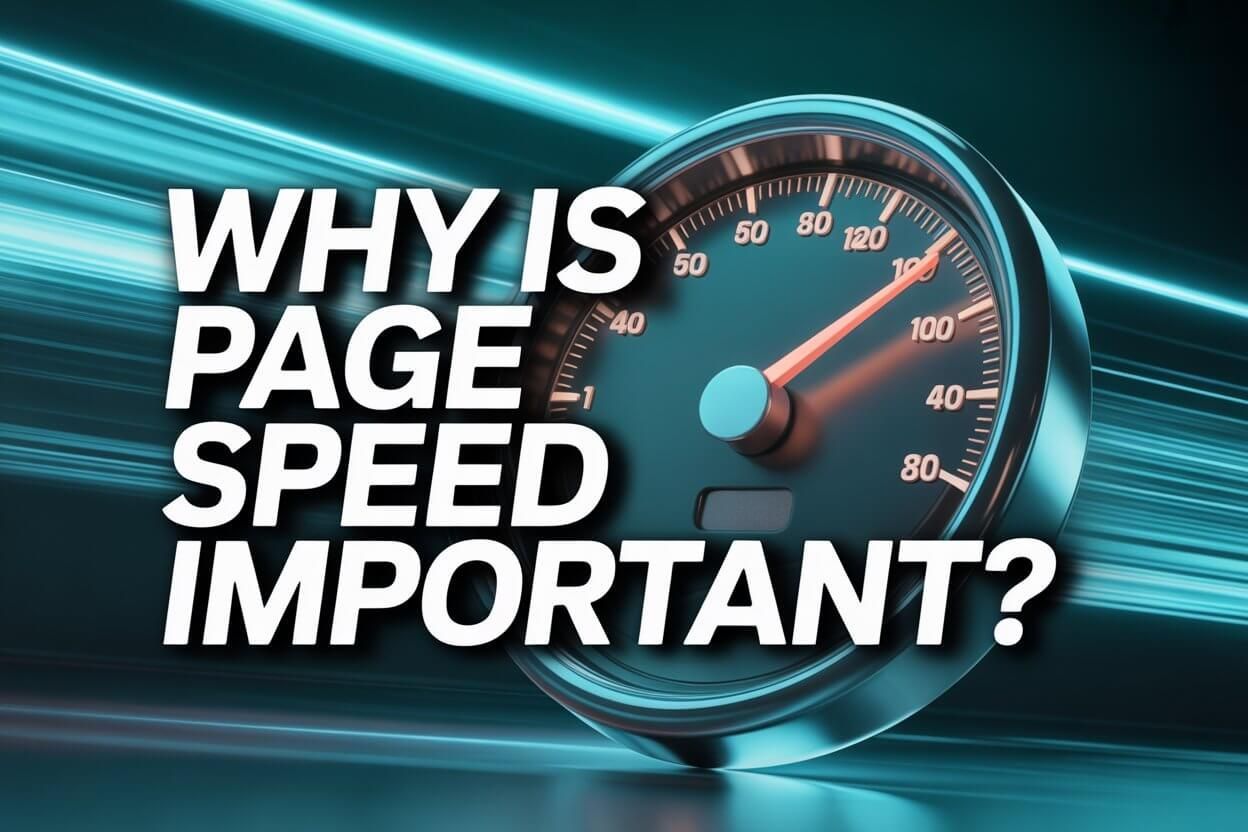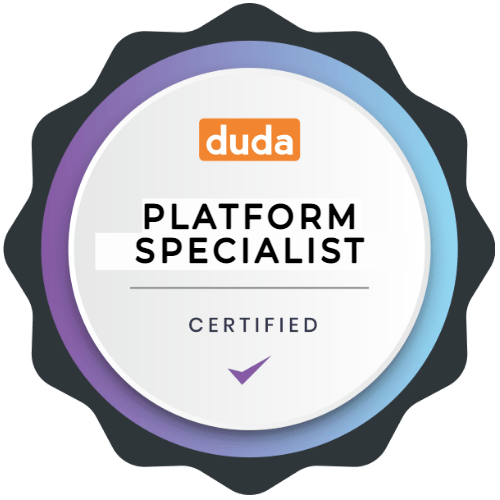Needing help with online marketing?
Why Is Website Page Speed Important?
Share this post
Picture this: A potential client clicks on your link from Google search results. They wait. And wait. And then, they bounce. The culprit? A slow page.
Website Page Speed REALLY matters nowadays.
Slow pages frustrate users and send negative signals to search engines. Page speed is a Google ranking factor, and with the rise of mobile users, page load time has never been more important. Whether it's a delay in first contentful paint or high input delay, poor web performance can damage trust and customer experience.
And worse, a slow page load can tank your conversion rates, increase your bounce rate, and even affect how users perceive your brand.
This is where a blazing-fast funnel builder, Convertri or Duda, makes fast load speed a reality.
With built-in speed optimisation, automatic image resizing, lightning-fast hosting, and smart content delivery, this funnel builder ensures your pages fully load before users even think about bouncing.
If you're serious about conversions, a fast site isn't optional; it's essential.

Why Page Speed Matters More Than You Think
If you're wondering, "Why is page speed important?", here are the top five reasons:
1. SEO & Rankings
Site speed is a Google ranking factor in search results.
Google PageSpeed Insights and Core Web Vitals assessment measure lab data and field data to help determine search signals.
A fast site tells search engines that you care about user experience—and that earns you higher rankings.
2. User Experience & Behaviour
Slow pages = high bounce rate.
Users expect sites and pages to load in under 3 seconds. If they wait longer, they're gone.
Good page load time improves visual stability, reduces input delay, and improves overall engagement.
3. Conversion Rates
Conversion rates drop by 4.42% for every extra second of load time (source: Portent).
A faster load speed leads to smoother interactions with forms, buttons, and CTAs.
Speed boosts trust and reduces friction during checkout or sign-up flows.
4. Mobile Experience
With over 60% of global traffic from mobile devices, mobile sites must be optimised.
Mobile users are even less patient with slow loading speed and performance hiccups.
Page elements that load poorly on smaller screens lead to bad reviews and lost leads.
5. Core Web Vitals & Site Health
Google's Web Vitals metrics focus on real-world performance:
Largest Contentful Paint (LCP): Measures when the page's main content loads.
First Input Delay (FID): How fast a user can interact with your page.
Cumulative Layout Shift (CLS): Ensures visual stability and reduces jarring motion.
These speed metrics reflect actual user experience and are used in Core Web Vitals assessments. A fast load time means passing the test with flying colours.
Best Core Web Vitals Website Builder For Web Page Speed (2025)
When it comes to building fast, high-performing websites that excel at Core Web Vitals, not all platforms are created equal. Recent data from the Core Web Vitals Technology Report reveals striking differences between content management systems and website builders.
Fastest Web Page Speed Clear Winner: Duda
Duda leads the pack with an impressive 83.63% of websites achieving good Core Web Vitals scores, consistently ranking #1 in performance benchmarks. This isn't just a one-time achievement, Duda has maintained this top position month after month, proving its commitment to speed optimisation.
What makes this even more remarkable is how Duda performs compared to popular alternatives:
- WordPress: Only 43.44% of sites pass Core Web Vitals—that's a massive 40+ percentage point gap
- Shopify: 75.22% (impressive for e-commerce, but still behind Duda)
- Wix: 70.76% (decent, but trailing significantly)
- Squarespace: 67.66% (good user experience but slower loading)
Why Duda Dominates Core Web Vitals
Duda also ranks second for Interaction to Next Paint (INP) scores at 93.35%, which measures how quickly users can interact with your pages. This combination of fast loading (LCP), quick interactivity (INP), and visual stability (CLS) creates the perfect storm for both user experience and SEO success.
The platform achieves these results through:
- Built-in performance optimisation
- Automatic image compression and resizing
- Clean, efficient code generation
- Lightning-fast hosting infrastructure
- Smart content delivery networks
When Google uses Core Web Vitals as a ranking factor, choosing a platform that consistently delivers fast performance isn't just smart—it's essential for your search visibility and conversion rates.
What Slows Down Your Website Page Speed Results?
Here are the usual suspects behind slow sites:
- Huge image file sizes (try resizing images)
- Render-blocking JavaScript or CSS files
- Too much unused code or page elements that aren't optimised
- Shared hosting with poor performance
- No content delivery network (CDN)
- No lazy-loading for below-the-fold content
- Heavy use of third-party scripts
A detailed breakdown from tools like Google Lighthouse or PageSpeed Insights can help you pinpoint these issues using lab data and field data.
Other Key Factors That Make a Landing Page Effective
While site speed is critical, it's just one part of a high-converting landing page. Here's what else matters:
1. Clear Value Proposition
Your visitors need to understand what you're offering within 5 seconds. Use bold headlines and benefit-driven copy.
2. Strong CTA
Place your call to action above the fold, use contrasting colours, and make the copy actionable (e.g., "Get My Free Guide").
3. Trust Elements
- Add testimonials
- Use trust badges or security seals
- Include social proof stats
4. Visual Hierarchy
Make it easy to navigate with a logical layout, consistent fonts, and enough white space.
5. A/B Testing
Even with perfect site speed, user preferences vary. Test headlines, images, and layouts regularly to optimise conversion rates.
Website Page Speed FAQs
What is a good page load time?
Ideally, under 3 seconds. Under 1 second is considered excellent for landing pages.
What tools can I use to test site speed?
- Google PageSpeed Insights
- Google Lighthouse
- GTmetrix
- WebPageTest
What are Core Web Vitals?
They're Google's essential web performance metrics: LCP, FID, and CLS. They reflect real user experience and are used in SEO evaluations.
Why does mobile performance matter?
Over half of global website traffic is from mobile devices. Mobile users expect fast, responsive, touch-friendly experiences.
Can page speed really increase conversions?
Yes. A 1-second delay reduces conversions by 7%. A fast site keeps users engaged and ready to take action.
Parting Thoughts
So, why is page speed important? Because it touches everything: from Google search visibility to user input to your bottom-line conversion rates. A slow site sends users running and Google notices.
Don't let slow loading speed cost you leads and sales. Whether you choose Duda for its industry-leading Core Web Vitals performance or Convertri for ultra-fast funnel building, the key is selecting a platform that prioritises speed without compromising functionality.
Remember: In the world of the web, speed wins.
About Social Space
Hey there, I'm Robert Tickner!
I’m an online visibility consultant who helps local small businesses get noticed on Google search, guiding them on their digital journey for growth. I build websites with structured web design practices through SEO services that get noticed on Google's search algorithms, write the occasional blog, and boost Google Business Profile listings to improve overall traffic that helps convert more potential clients to your website.
I'm determined to grow my business.
My only question, is it time to boost yours?




